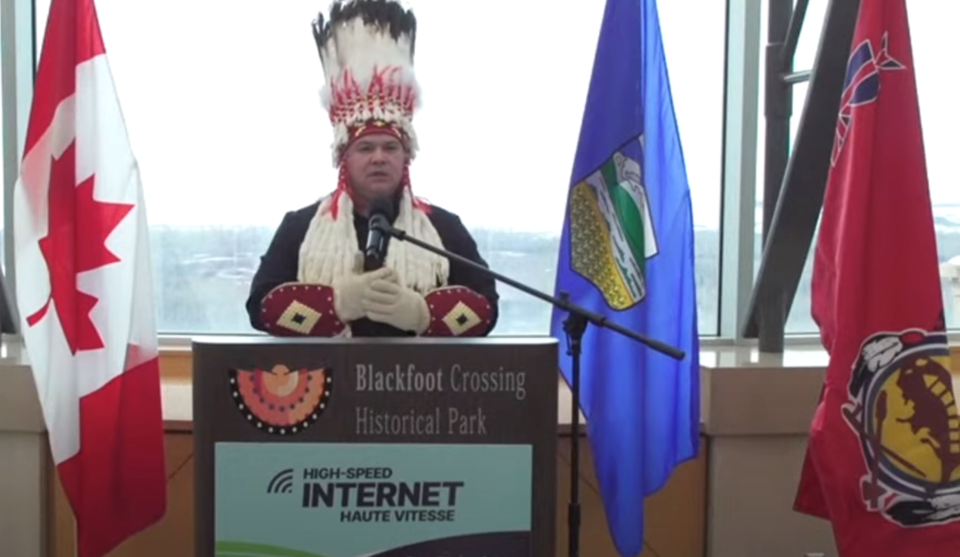Fourteen new projects have been announced as part of Alberta's broadband strategy, moving the province one step closer to the goal of universal connectivity by 2027.
The federal and provincial governments are jointly investing $112 million in the 14 projects announced Tuesday, which are expected to connect more than 22,500 homes to broadband internet.
"Internet is no longer a luxury, it's a necessity in the way of life," Gudie Hutchings, federal Minister of Rural Economic Development, said during a press conference at the Blackfoot Crossing Historical Park in Siksika Nation on Tuesday.
"It levels the playing field for folks all across this magical country no matter where you live, but especially for rural Canadians."
Hutchings said that in 2014, only 79 per cent of Canadians had access to affordable, reliable high speed internet. Since then, more than $3 billion has been disbursed through the Universal Broadband Fund, bringing the number of Canadians with high speed internet up to 93 per cent today.
When the province began developing its broadband strategy in 2022, it estimated about 201,000 households, or half a million people, lacked adequate internet access, predominantly in rural areas. In a dollar-for-dollar matching agreement with the federal government, Alberta plans to invest $390 million to connect the remaining homes.
"This announcement in Siksika Nation marks a significant milestone for internet connectivity in rural Alberta. This investment will provide reliable high-speed internet access to more than 22,500 underserved homes in 166 rural and remote communities in Alberta,” Hutchings said.
Siksika Nation was among the recipients announced Tuesday. Chief Ouray Crowfoot said the digital divide is a current and increasing reality for Siksika, and one that was really exposed during the time of COVID when schools were moved online, and gaps in connectivity led to students falling behind.
"Some of our students ended up actually being held back a year because of missing so many days of school and not being able to to connect or having to drive from their home to the city to get that connectivity to go to school," Crowfoot said.
Bringing high-speed internet to Siksika requires an "all-nation collaboration," he said, and meaningful partnerships that create equitable opportunities.
"The goal of my vision is that, as somebody's driving across the reserve, to not know that they're on the reserve. When they come onto the reserve, there's not a downshift in housing, there's not a downshift in roads, there's not a downshift and connectivity."
Nate Glubish, Alberta's minister of technology and innovation, initially brought forward the provinces broadband strategy in 2022. Glubish said it took longer than anticipated to get the first few tranches of projects approved and construction started, but that funding has been shifted to later years of the broadband strategy and the province still expects to meet its target of 100 per cent connectivity by 2027.
Both the federal and provincial government forecast huge economic gains once universal connectivity is achieved, including the creation of 2,000 long-term service jobs in rural communities, improved access to primary health care through telehealth, and improved access to remote education for 120,000 students.
"From education, to health care, to any kind of business that you might want to be a part of, to agriculture, and everything in between: every aspect of our lives is touched by technology. And without connectivity, that technology is meaningless," Glubish said.



